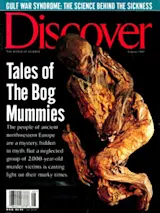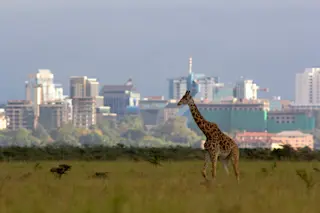If you were to travel through West Africa, going from Senegal in the northwest to Cameroon in the southeast--an area smaller than the United States--you would encounter more than 700 distinct languages, some as different from one another as Chinese and English. Cameroon, with a population of 12 million, is home to 275 languages; tiny Togo has about 50. This plenitude of tongues has puzzled linguists. The inhabitants, after all, are not mutually isolated by massive mountains as are the peoples of Papua New Guinea, the only place in the world with a linguistic diversity exceeding West Africa’s.
Now Daniel Nettle, a linguistic anthropologist at Oxford, has a new theory that may explain how such a Babel evolved. Nettle has been studying the distribution of West African languages for four years, comparing ecological maps with maps showing the ranges of various languages, something no one had done before. He noted, ...














